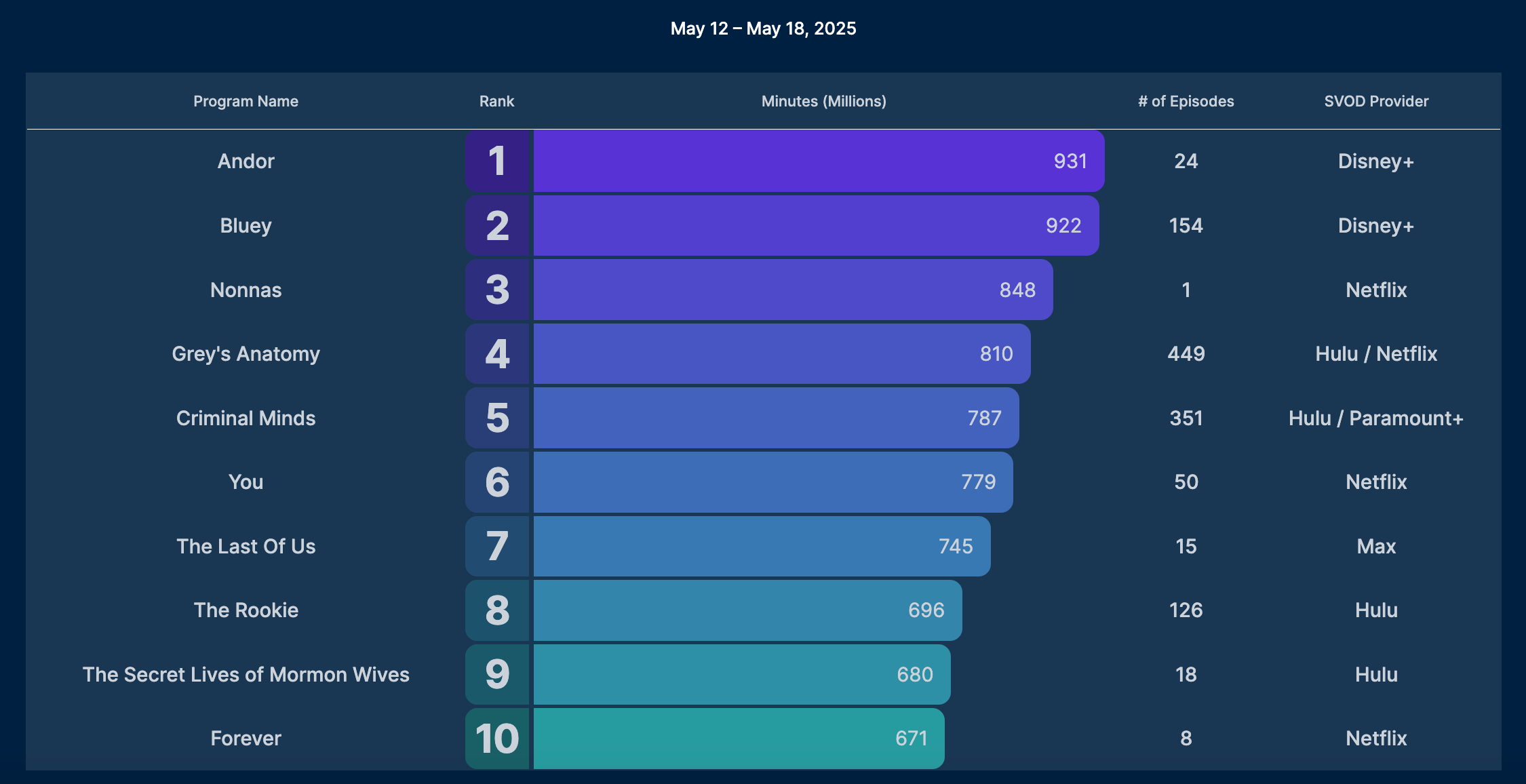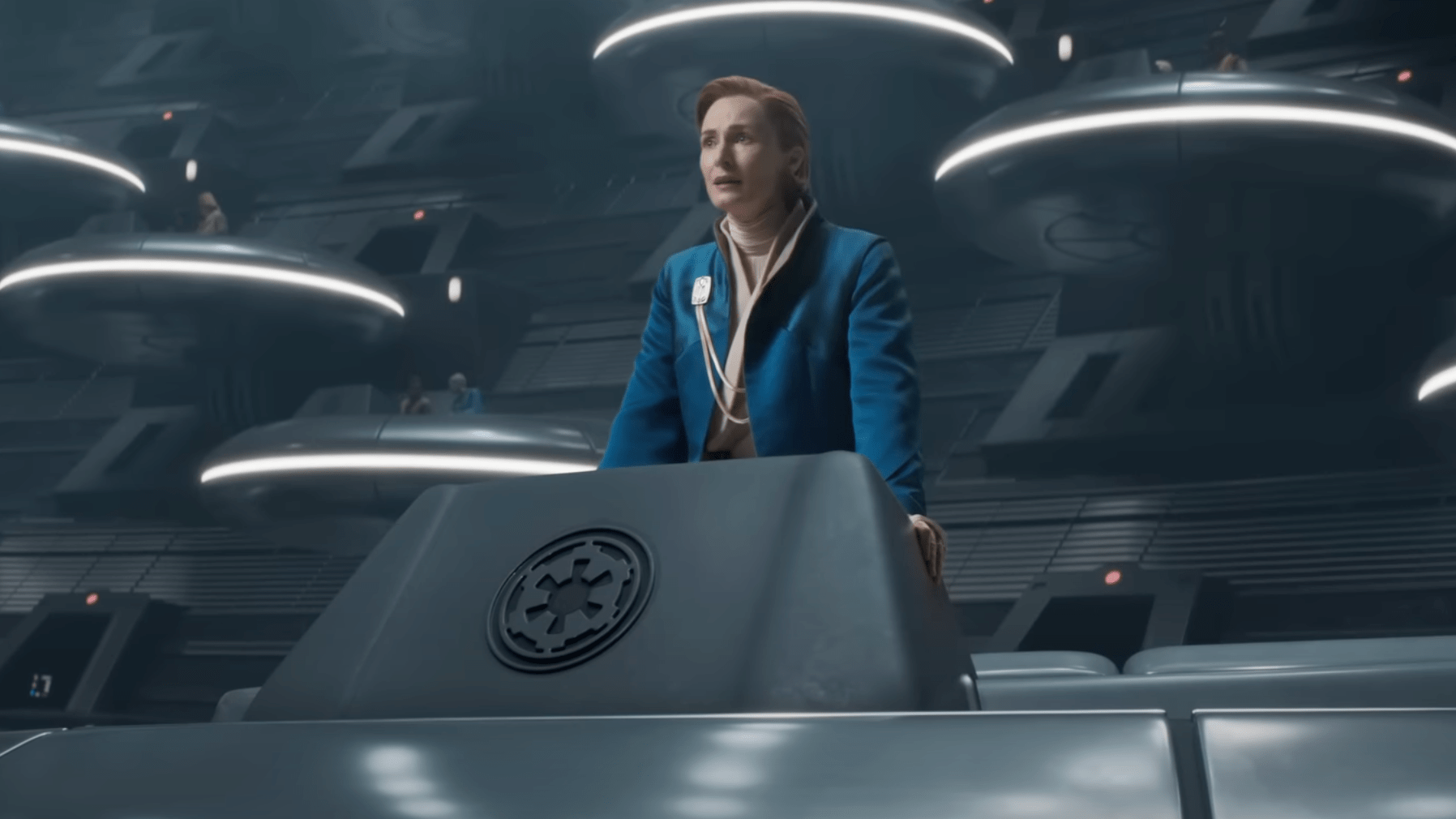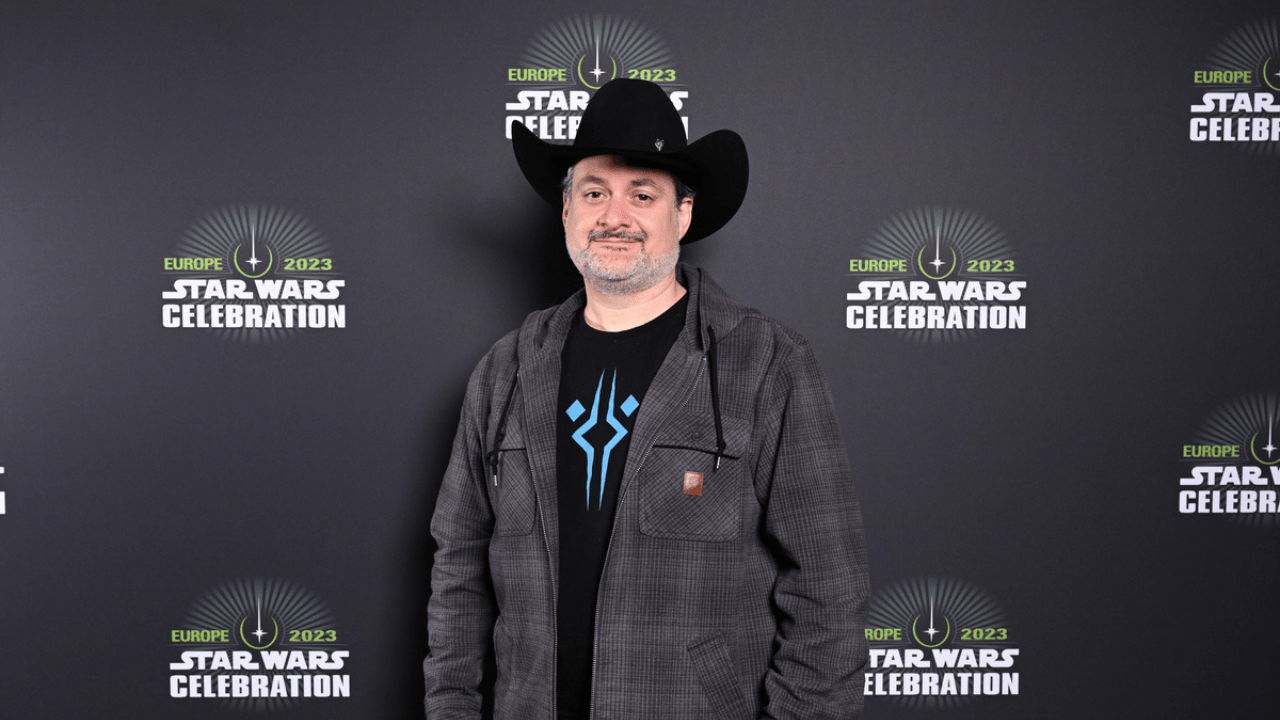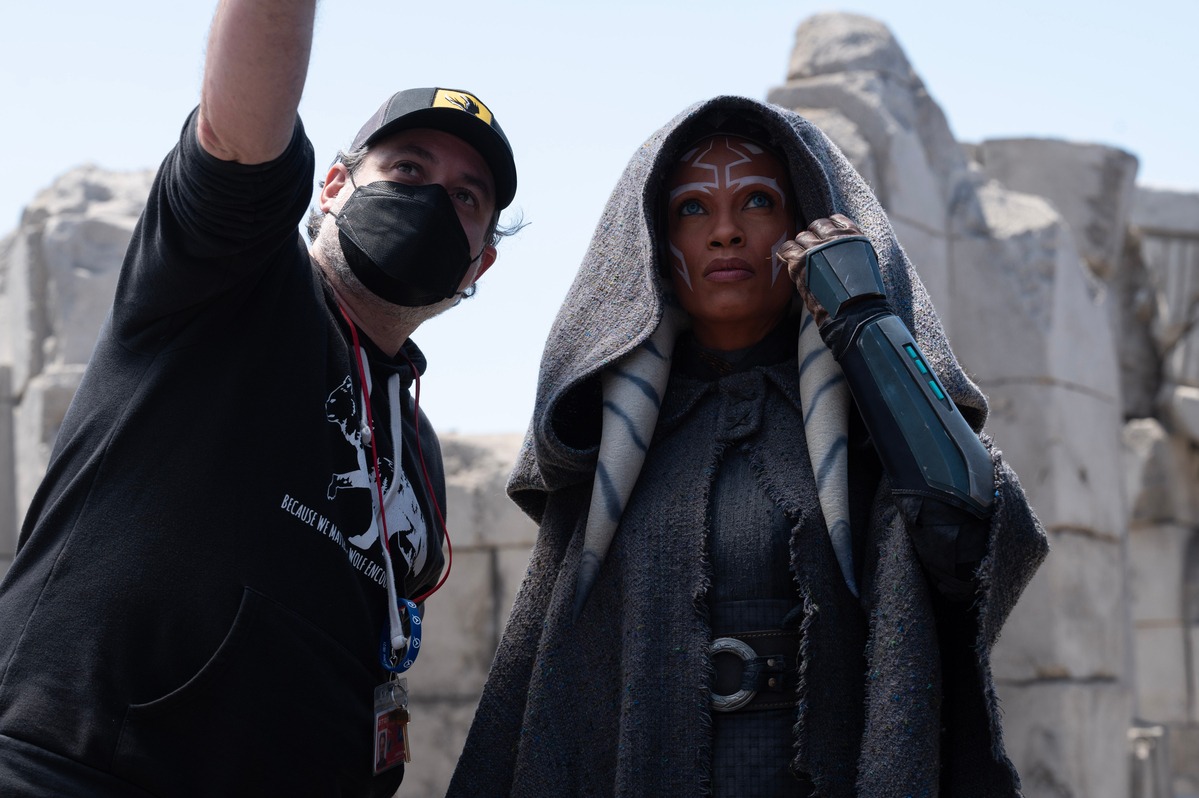
In a remarkable feat, the Disney Plus series Andor claimed the top spot on streaming services in the United States during the week ending May 18, 2025. According to Nielsen’s Top 10 list, it amassed a staggering 931 million minutes of viewership, outperforming popular shows like Bluey and Netflix sensation Nonnas.

But before Lucasfilm pops the champagne, there’s a catch—or rather, several.
Disney Gamed the System
Initially, it might seem that Disney and Lucasfilm have scored a significant victory with Andor’s release. However, upon closer examination of Nielsen’s ranking methodology, it appears that the numbers may not accurately represent the show’s massive viewership. Disney opted for an intriguing release strategy for Andor, debuting three episodes concurrently every week rather than one at a time.
It’s important to mention that Nielsen tracks the total amount of time spent watching, rather than the number of individual viewers or households. Consequently, if Disney releases three complete episodes within a single week, this immediately increases the overall viewing duration.

In simpler terms, if each episode lasts about 45 minutes, that means one person watching all three episodes would accumulate 135 minutes of viewing time. This is equivalent to three people watching just one episode individually. However, it’s not necessarily misleading, but it’s not a straightforward comparison with weekly releases or shorter content.
This tactic helped Andor climb steadily in the charts throughout its second season.

In the first week, it accumulated a total of 721 million minutes of viewing time. The following week saw an increase to 821 million minutes watched. Week 3 brought in 830 million minutes. During the finale (Week 4), a record-breaking 931 million minutes were viewed. It’s important to note that as new viewers joined later, they likely went back and binge-watched earlier episodes, which would have contributed to these inflated viewing figures.
That final spike coincided with the release of the last three episodes. Surprise, surprise.
It’s important to mention that Andor held the leading position, but it’s crucial to consider that Netflix’s Nonnas, although finishing second with a total of 848 million minutes viewed, achieved this as a single film, not an entire series like Andor. This implies that Nonnas almost matched Andor’s 931 million minutes despite Disney releasing three full episodes at once, with only 24 episodes available in total for Andor at the time.
As a movie enthusiast, I can’t help but ponder over how the “episode-dump” strategy might have tipped the scales in favor of shows like Andor. It makes me wonder if we were seeing a distorted picture without it.
A Big Win for Tony Gilroy, Not Dave Filoni
As a movie reviewer, I’d rephrase it this way: In my perspective, the series “Andor” stands out as an unusual take on Star Wars, seemingly distant from the signature style of showrunner Dave Filoni. Unlike his previous projects like “The Acolyte,” “Ahsoka,” and “Skeleton Crew,” which have faced significant criticism and commercial setbacks, “Andor” appears to be a departure from Filoni’s creative influence, as it was developed under the guidance of Tony Gilroy.

Gilroy chose to bypass Filoni’s creative influence and communicated directly with the president of Lucasfilm, Kathleen Kennedy. It’s being whispered within Lucasfilm circles that this decision may have stirred some tension internally, as Filoni and his team reportedly feel disgruntled when people praise Andor as superior.
The significance lies in the fact that Filoni, who holds the position of Chief Creative Officer at Lucasfilm and is speculated to be one of the potential successors to the Star Wars empire alongside Carrie Beck, played minimal roles in the production of Andor. Consequently, the success of Andor might not simply be an accolade for Kennedy; it could also subtly challenge Filoni’s influence over the future direction of the franchise.

Given Kennedy’s anticipated departure within the upcoming year, industry insiders anticipate both Filoni and Beck assuming the role of co-heads for Lucasfilm’s creative division. However, the significant critical acclaim and viewership ratings achieved by ‘Andor’, which was not influenced by Filoni, might influence this perception.
Rogue One Rebounds, Emmy Buzz Builds
In my perspective as a film critic, I was taken aback by the renewed popularity of “Rogue One: A Star Wars Story” from 2016. This movie, which serves as a direct precursor to the series “Andor,” has made a comeback, finding itself at the ninth spot on the box office charts with a whopping 179 million minutes viewed. I believe this surge in viewership can be attributed to fans revisiting the film as they eagerly await the conclusion of Cassian Andor’s storyline. It’s an intriguing situation where an almost decade-old movie manages to reclaim its place on the charts, buoyed by the success of a prequel series.

Regarding awards, it’s anticipated that “Andor” will lead Disney’s Emmy bid, with a total of 23 nominations spanning the writing, directing, and acting fields. Interestingly, the last five episodes of this series have reportedly scored 9.5 or higher on IMDb, making it the first show to achieve such a high rating consistently, as stated by Forbes.
Bottom Line
Disney’s Andor, though praised by critics and boasting impressive viewership due to strategic release planning, serves as an indication that achievements can stem from creative perspectives beyond the canonical vision of the Star Wars era by Filoni. This is a narrative to keep an eye on as Lucasfilm plans its future course.

If it’s the Disney Star Wars series that disregards Dave Filoni completely which turns out to be the most successful, what does this imply about the future of Lucasfilm under his creative supervision?
Read More
- Who Is Harley Wallace? The Heartbreaking Truth Behind Bring Her Back’s Dedication
- 50 Ankle Break & Score Sound ID Codes for Basketball Zero
- 50 Goal Sound ID Codes for Blue Lock Rivals
- KPop Demon Hunters: Real Ages Revealed?!
- Lottery apologizes after thousands mistakenly told they won millions
- 100 Most-Watched TV Series of 2024-25 Across Streaming, Broadcast and Cable: ‘Squid Game’ Leads This Season’s Rankers
- Umamusume: Pretty Derby Support Card Tier List [Release]
- Ultimate AI Limit Beginner’s Guide [Best Stats, Gear, Weapons & More]
- Mirren Star Legends Tier List [Global Release] (May 2025)
- Former Blizzard president worried about future of Xbox and says changes are needed “fast”
2025-06-13 20:56